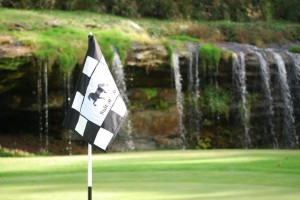Please forgive me, but I must vent.
I’ve been a member of the national golf media for over 40 years, and I’m proud of it. There are times, though, when I don’t agree with the majority of my brethren and this is definitely one of those times.
It seems to me that most media members devoted to our sport — that’s print, broadcast, digital and anybody else who has a passion for golf and the spreading of information about it — are reverting back to an old theme: Put the focus on Tiger Woods because he matters the most.
Granted, Woods moves the needle more than any other player, but there’s a lot more good stories in golf than Tiger-mania. When he won the Arnold Palmer Invitational there was the immediate knee-jerk reaction that “Tiger is back!’’
And just in time for the Masters, to boot. Well, the Masters showed that Woods isn’t back yet — by a long shot. The Arnold Palmer Invitational was just one win, that’s all.
When will the broad-based golf world realize that the PGA Tour isn’t the “Tiger Woods Show?’’ That mistake was made when he was winning a lot. Then, when Woods had his problems on and off the course, there was — in far too many quarters — the sentiment that golf wasn’t worth following without Tiger.’’ That was ridiculous then, just as a premature focus on Woods is now.
Frankly, I’m just as interested in the stories of Luke Donald, Rory McIlroy, Bubba Watson, Lee Westwood, Matt Kuchar, Phil Mickelson, Dustin Johnson, Sergio Garcia, Graeme McDowell, Keegan Bradley, the good old names on the Champions Tour and Yani Tseng’s domination of the women’s circuit as I am in what Tiger’s doing. This isn’t meant as Tiger bashing. It’s simply an effort to tell it like it is: the pro tours have more good stories lines than they ever did, and Tiger’s is just one of them.
Speaking of telling it like it is, I most heartily recommend the just-released Hank Haney book as must reading. Haney’s “The Big Miss’’ (Crown Archetype, New York, $26) was released just before the Masters — an ideal time for the book to get maximum exposure. Haney was Woods’ swing coach for six years. He resigned in the aftermath of the personal problems that sent Woods’ popularity into a tailspin.
Given my stance on Tiger over-kill, calling attention to a book involving Woods might seem silly but “The Big Miss’’ is anything but that.
I’m not sure how many Chicagoans are aware of this, but Haney is one of us. He grew up in the Chicago area, playing high school golf for Deerfield. His first instructor was Jim Hardy, then the head professional at Exmoor Country Club in Highland Park. Hardy, who has long since left the area just as Haney has, remains one of our sport’s foremost instructors and Haney has followed in his footsteps while building a much higher profile.
Haney’s career path took him to the John Jacobs’ Schools, then a job as golf coach at Southern Methodist University. He now runs four golf schools in Texas, has a regular gig on The Golf Channel, writes for major golf publications and is — of course — the former swing coach for the world’s most famous current golfer.
As soon as the book’s release neared Woods condemned Haney for writing it, claiming it was “unprofessional’’ for him to discuss their work together and insisting he’d never read the book. I’m not sure whether Mark Steinberg,Woods’ long-time representative, read the book or not but he was even more critical of this Haney project.
Enough about that nonsense. Those who haven’t read it might think Haney’s book is a hatchet job on Woods. It’s not. While I’m sure a profit motive was involved, I’m glad Haney took on the project. (He did so, I must say, working with Jaime Diaz — a long-time friend of mine. Jaime is a top-notch golf writer, one of the best in the business. He was recently named editor of GolfWeek magazine. It’s important to note that Haney calls Diaz his “collaborator.’’ Diaz’ name isn’t on the cover of the book, only Haney’s).
The gist of the book is this: Being Woods’ swing coach was never an easy job. In explaining why, Haney gives glimpses into Woods’ life that I haven’t seen so clearly presented before. We don’t get the sordid details of his sexual escapades, but we don’t need them. Instead we learn how driven, focused and single-minded Woods could be. You got them impression from Haney that it wasn’t easy being Tiger Woods, despite his enormous talent. And you also got the impression that it wasn’t always easy being around Woods, even in the best of times.
There were times Woods blamed his swing coach for his own shortcomings in competition. There were times Woods would give Haney the silent treatment on the lesson or practice tee without any apparent reason. When Haney came under criticism for Woods’ play, Woods wouldn’t support him.
There was an instance when Woods told then-wife Elin that there wouldn’t be a party after he won a big tournament because winning “is expected’’ for him. He was great at staying in the moment, which helped on the golf course. But that didn’t help him enjoy life off it.
One thing Woods apparently did enjoy was training with the Navy SEALs. His late father Earl was a career military man, and Woods’ fascination with the SEALs’ lifestyle led him to take some extraordinary risks. He’d go on SEALs’ training expeditions, both underwater and parachuting out of planes. He’d take long runs with heavy boots on. There was the definite possibility that these ventures contributed to the knee problems that slowed his golf career perhaps as much as his marital woes did. Haney warned Woods of impending peril, but to no avail.
Their breakup was declared by Haney, but Woods wouldn’t accept his resignation and then claimed that it was an agreement of mutual consent. It wasn’t.
“My departure was complicated,’’ Haney wrote, “but I’m proud of the way I managed it.’’
Haney insists he’ll never work with a touring pro again, but doesn’t regret time spent with Woods. “I wish him well,’’ was how Haney concluded the book.
That was a perfect ending. Appreciating Tiger Woods’ extraordinary talent is one thing. Understanding Tiger Woods, the person, isn’t so easy. He is, though, perhaps the greatest athlete of our generation. I’m glad Haney made the effort.


